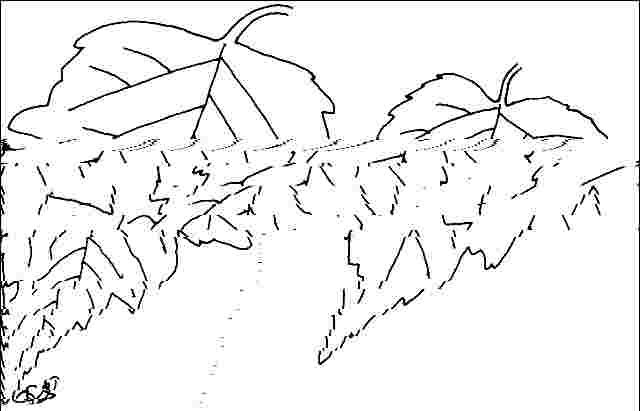Introduction
Washington Hawthorn grows 20 to 35 feet tall in a wide pyramidal shape. The tree has a rapid growth rate when young, slowing with age. It is tolerant of many different soil types. The small, white, abundant flowers, produced in clusters in late spring are followed by showy orange to red fruit that persist into winter, if not eaten by birds. The fall leaf color is orange to red and can be quite striking.

Credit: Ed Gilman
General Information
Scientific name: Crataegus phaenopyrum
Pronunciation: kruh-TEE-gus fee-no-PYE-rum
Common name(s): Washington Hawthorn
Family: Rosaceae
USDA hardiness zones: 4A through 8A (Fig. 2)
Origin: native to North America
Invasive potential: little invasive potential
Uses: urban tolerant; highway median; street without sidewalk; specimen; screen; Bonsai
Availability: not native to North America

Description
Height: 20 to 35 feet
Spread: 20 to 25 feet
Crown uniformity: symmetrical
Crown shape: pyramidal
Crown density: moderate
Growth rate: moderate
Texture: medium
Foliage
Leaf arrangement: alternate (Fig. 3)
Leaf type: simple
Leaf margin: serrate, lobed
Leaf shape: ovate
Leaf venation: pinnate
Leaf type and persistence: deciduous
Leaf blade length: less than 2 inches, 2 to 4 inches
Leaf color: green
Fall color: copper
Fall characteristic: not showy

Flower
Flower color: white/cream/gray
Flower characteristics: showy
Fruit
Fruit shape: round
Fruit length: less than .5 inch
Fruit covering: fleshy
Fruit color: orange, red
Fruit characteristics: attracts birds; showy; fruit/leaves not a litter problem
Trunk and Branches
Trunk/bark/branches: branches droop; not showy; typically one trunk; no thorns
Pruning requirement: needed for strong structure
Breakage: susceptible to breakage
Current year twig color: brown
Current year twig thickness: thin
Wood specific gravity: unknown
Culture
Light requirement: full sun
Soil tolerances: clay; sand; loam; alkaline; acidic; well-drained; occasionally wet
Drought tolerance: high
Aerosol salt tolerance: moderate
Other
Roots: not a problem
Winter interest: yes
Outstanding tree: no
Ozone sensitivity: tolerant
Verticillium wilt susceptibility: resistant
Pest resistance: sensitive to pests/diseases
Use and Management
With lower branches removed, this Hawthorn is quite useful as a street tree where there will not be heavy pedestrian traffic. The thorns are about three inches long and contact with them can be painful. Left unpruned it creates a nice specimen in a lawn with lower branches persisting all the way to the ground. This characteristic also makes it quite suitable as a screen. The bright fruit makes a show in the fall and winter which many people will comment on. Like other Hawthorns, the major problem with the tree is sensitivity to a large variety of insects and diseases.
Older trees are susceptible to splitting apart in ice storms. Crotches with embedded bark are most susceptible. Prune to a single trunk to help prevent this problem.
The cultivar `Fastigiata' has an upright growth habit.
Pests
Aphids can be controlled with strong sprays of water from a garden hose, if the colony is in the lower branches. Sometimes the aphids themselves are not seen but the distorted growth, honeydew on the leaves, and sooty mold growing on the honeydew are obvious.
Borer attacks may be prevented if the trees are kept in good vigor with regular fertilization.
Leaf miners symptoms are brown blotches on the leaves.
Lace bugs can be a serious, though occasional, problem. The insect feeding on the undersides of the leaves causes chlorotic flecks on the upper leaf surfaces. The lower sides of the leaves are covered with small, brown, sticky flecks.
The pear slug skeletonizes Hawthorn leaves and these sawfly larvae have a slimy appearance. A few insects can be washed off with a garden hose.
Tent caterpillar nests can be pruned out while still small. Sprays of Bacillus thuringiensis may be used. Do not burn nests while the nests are in the tree. The injury from the fire may exceed that caused by the insects.
Scales may be controlled with horticultural oil sprays.
Spider mites are so small they can cause much foliage discoloration before being detected.
Diseases
Fire blight: This disease can be severe in some parts of the country. The first noticeable symptom of fire blight is the browning of branch tips. The tips appear to be burned or scorched and the dead, brown leaves droop but hang on the tree. Cankers form and the bacteria is washed farther down the branch by rain. The bacteria, Erwinia amylovora , are spread from diseased to healthy twigs by rain, bees, and other mechanical means. There is no satisfactory chemical control. The disease is less of a problem if trees are not located near apple or pear orchards. Prune out blighted branch tips by cutting a foot or two beyond the diseased wood. Over-fertilizing with nitrogen fertilizer may increase tree susceptibility to fire blight.
Leaf blight attacks most Hawthorns but especially English Hawthorn. The symptoms are small reddish brown spots on the leaves which may run together. Infected leaves drop in August and severely infected trees may be completely bare.
Cedar Hawthorn rust causes orange or rust colored spots on the leaves leading to early defoliation. The fruits and twigs are also attacked. Juniper is an alternate host. Cedar-quince rust attacks fruits. Washington, Lavelle and Cockspur Hawthorn are resistant to rust diseases.
Scab causes leaf spotting and defoliation. The fruit have black raised spots on them.
Powdery mildew causes a white powdery growth on the leaves.